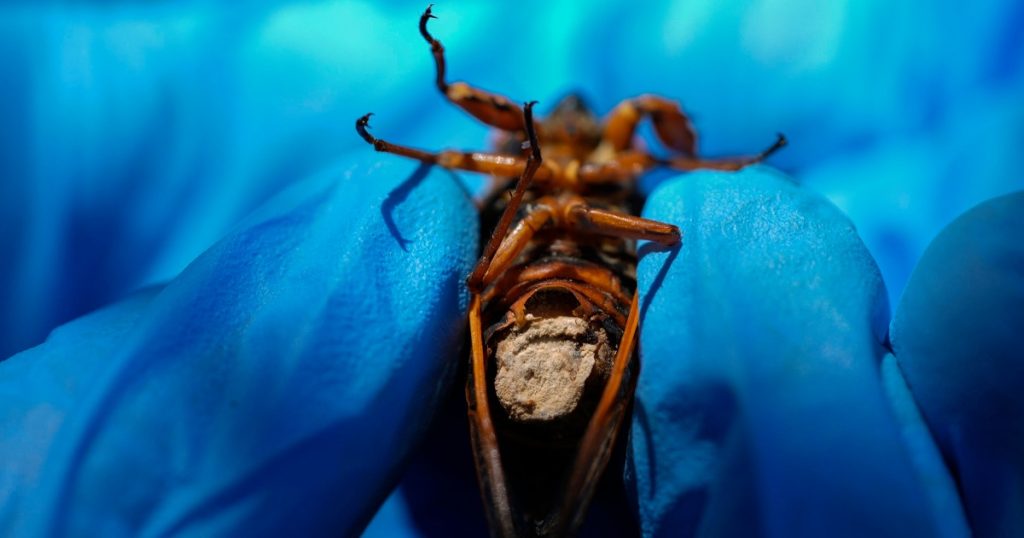Periodical cicadas are not only strange creatures with bulging red eyes and alien-like mating sounds, but some of them are also manipulated by a super-sized fungus called Massospora cicadina. This fungus is unique in that it produces amphetamine, the drug also known as speed, and takes control of the cicadas, making them hypersexual and looking to spread the parasite as a sexually transmitted disease. The infected cicadas become zombies, completely at the mercy of the fungus, which has the largest known genome of any fungus, with about 1.5 billion base pairs.
West Virginia University mycology professor Matt Kasson, along with his son Oliver and graduate student Angie Macias, are conducting research on the Massospora cicadina fungus. Despite the challenge of finding infected cicadas, Kasson managed to collect 36 during a trip to the Morton Arboretum outside Chicago, and received an additional 200 from people around the country. Some experts estimate that one in every 1,000 periodical cicadas may be infected with this fungus, although it’s difficult to be certain due to population dynamics. The fungus doesn’t kill its host but instead needs to keep it alive to spread the spores and infect others.
The debate among scientists revolves around the question of whether the fungus infects cicadas emerging from the ground after 13 or 17 years, or if it targets newly hatched nymphs on the way underground for an extended period. Infected cicadas attempt to mate with unaffected individuals, spreading the spores through sexual transmission. Even males in their hypersexualized state pretend to be females to infect other males. The psychoactive compound produced by the cicadas infected with the Massospora cicadina fungus is similar to amphetamines, although a cousin fungus that infects annual cicadas out west produces compounds more akin to psychedelics like magic mushrooms.
Despite the intriguing nature of this research, experts warn against consuming infected cicadas, as the taste is described as bitter and potentially poisonous. Kasson, in the interest of science, tried an infected cicada during the emergence, but immediately rinsed his mouth after tasting it. The fungus that infects periodical cicadas is different from the one that infects annual cicadas, leading to confusion among researchers and the general public. The Massospora cicadina fungus belongs to the subset of parasites that do not kill their hosts but instead manipulate them to spread their spores through sexual activity.
Conclusion:
The interaction between the Massospora cicadina fungus and periodical cicadas is a fascinating subject of study, shedding light on the complexities of nature. Researchers like Matt Kasson and his team are working diligently to understand how this fungus manipulates the behavior of cicadas, turning them into sex-crazed zombies in order to spread its spores. Through their efforts, we gain valuable insights into the intricate relationships between parasites and their hosts in the natural world.


